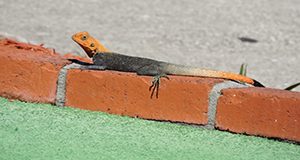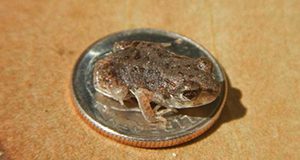
Florida has experienced more introductions of nonnative reptiles than any other region on Earth. Approximately three times as many species of established, nonnative lizards live in the state as do native species. This 5-page fact sheet written by Kenneth T. Gioeli and Steve A. Johnson and published by the UF/IFAS Department of Wildlife Ecology and Conservation provides background information about the visually striking Peters's rock agama, including information about its introduction to Florida, as well as its biology, conservation issues, and management recommendations.
https://edis.ifas.ufl.edu/uw476
